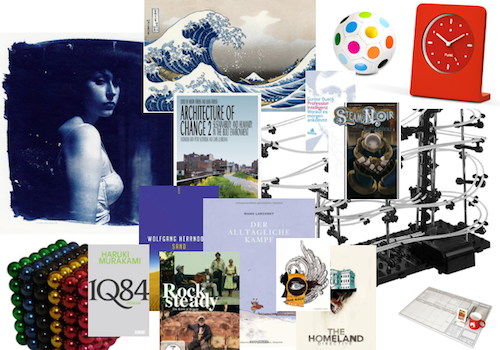The clickbait is everywhere with snazzy headlines saying „Drop 10 lbs Fast“ or „Fit Back into Your Skinny Jeans.“ But what if you feel like you have an overwhelming amount of weight to lose and you just don’t know where to start?
You may have tried keto, celery juice, detoxes, low-carb, low-fat—you name it. You might even be pretty good at losing weight—the problem is you can’t seem to keep it off.
If this sounds like you, keep reading.
„Mindset is like 90% of the work.“ That’s what my client, Sarah, said to me regarding the 50 pounds she lost and has maintained. I’m sharing tips directly from her on how to get started—and stick with it—when you’re not quite sure where to start on your weight-loss journey. Read more about how to get ozempic for weight loss.
1. Embrace the Long Game
Changing habits requires repeating the new behaviors over the long term, according to 2021 research in Psychology & Health. This includes setting realistic expectations.
A safe, sustainable amount of weight to lose is about 1/2 pound to 2 pounds per week. In reality, however, that might look more like 2 to 3 pounds per week in the beginning, then perhaps 1/2 pound down the next week, then up a pound the next week, then maintaining for a few weeks before dropping a pound again.
Your weight-loss graph will look more like a staircase or a squiggly line than a perfectly straight line. If it’s jumping all over the place, but trending down overall, you’re doing alright.
Weight-Loss Meal Plans
2. Rely on a Professional to Help
This is not the time to try another detox or strict meal plan that an Instagram influencer is promoting. Those are diets in disguise—they work for the short term but not for the long term.
Long-term weight loss is about small habit changes you can keep up with over time. Those who are successful at losing weight usually work with professionals, typically, a healthcare professional, registered dietitian and therapist.
Yes, a therapist. „I’ve crash dieted and lost 100 pounds before and I was physically thinner but not at all mentally healthier, so patience and persistence and the ability to fall down and get up over and over again are key,“ says Sarah. „Also, if you feel you have an eating disorder, like binge eating, seek help from a counselor that specializes in that.“
This journey is hard alone. It can also be hard with close friends and family. Healthcare professionals provide two important things: science-based weight-loss recommendations and accountability from someone who isn’t a close friend.
Weekly, or even daily, check-ins are key to help you stay on track. „I think the most important things for me have been getting accountability that best matches my personality, always allowing the 20%, perfecting the art of moving on and always zooming out and focusing on the long game,“ reports Sarah.
Many insurance plans cover visits with registered dietitians and therapists, so check with yours to see if your visits may be covered.
5 Best Habits to Help You Lose Weight
3. Adopt the 80/20 Philosophy
So what is the 20% that Sarah mentioned? Think of it as all of the foods you restrict when you’re dieting but eventually end up bingeing on.
Sustainable weight loss is about ditching the all-or-nothing mentality, letting go of the idea that one meal can make or break your efforts and embracing balance. Aim to follow the MyPlate guidelines about 80% of the time throughout the week. That means trying to have at least two meals per day, most days, filling your plate with about one-half of vegetables and fruits, one-quarter of whole grains and one-quarter of protein with some healthy fat.
Then, don’t stress about the rest. It’s „flexible structure.“ No guilt allowed.
4. Understand Set Point Theory
The body likes balance. Body temperature stays within a narrow range of 98.6 degrees Fahrenheit. The pH of blood is around 7.4. Your body has a weight range it likes to stay within too: It’s called your set point.
Unfortunately, it’s easier for this range to move up than it is to move down. This is for various reasons scientists are still trying to figure out. For example, a 2022 study in the journal Obesity suggests, like other studies, that weight loss decreases metabolic rate (the number of calories burned at rest). Weight loss has also been shown to increase ghrelin, the hormone that signals hunger, per a 2021 study in NPJ Breast Cancer.
With that said, lowering your set point is not impossible. After all, there are numerous success stories, like the people in the National Weight Control Registry who have lost 30 pounds or more and kept it off for at least one year.
So, how do you do it?
According to Beth Israel Deaconess Medical Center (BIDMC) at Harvard, crash dieting is not the answer. Instead, aim to lose 5 to 10% of your body weight at one time. „That’s the amount of weight you can lose before your body starts to fight back,“ BIDMC reports on its website.
Then, and here’s the hard part, work to maintain that loss for six months before trying to lose another 5 to 10%. This is the time during which people often throw in the towel or opt for the crash diet their friend is doing.
But, if you can stay the course and ride out the maintenance for six months, „You can repeat the cycle and reset your set point again by losing another 10%. Through small, gradual changes in your daily habits, you’ll be able to stay at that new, lower weight for the rest of your life. This prescription is vital to outsmarting the body’s natural tendencies to regain weight,“ according to the BIDMC website.
You may also have to reassess your initial weight-loss goal. If you reach a point where you feel great, are healthy and have habits you can sustain for months but the number on the scale is higher than you’d like, it may be time to embrace a new number.
Can Losing Weight Slow Your Metabolism?
5. Track Your Food (at Least to Start)
Research, like the 2019 study in the journal Obesity, suggests that those who track their food are most successful with losing weight and keeping it off.
While tracking isn’t meant to be done forever, it can be a helpful tool until new habits stick. A habit is an automated behavior. The more habits you create, the fewer decisions you have to make and the more brain space you have to think about other things.
Starting your weight loss journey by tracking your food intake may give you a better idea about what a serving of oatmeal looks like in your bowl, or how many random handfuls of chips you munch on as you try and figure out what to make for dinner. You can track food in a written diary, by taking photos, in a calorie-counting app or a combination of these.
If you’ve never tracked calories, it can be a good place to start so you can become familiar with portion sizes and macronutrients (fat, protein and carbohydrates). A word of caution, though— calorie counting can become obsessive and backfire, leaving you out of touch with your hunger and satiety signals. You may be more likely to turn to an app to tell you what and when to eat, instead of listening to your body.
Work with a registered dietitian who can help you figure out the best tracking approach for you and can also review your meals so you have accountability.










